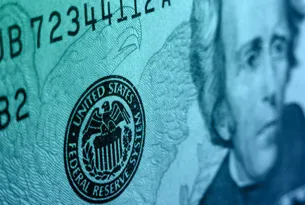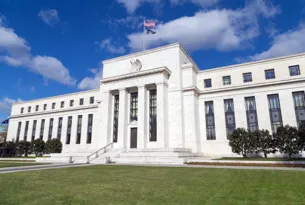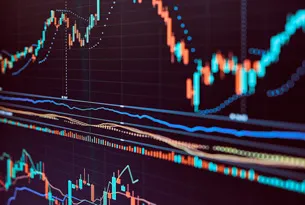2011 will be the year inflation—as well as our confidence and ability to prosper—comes back, says MoneyShow chairman and founder Charles Githler.
A profitable year awaits the prepared as markets continue to adjust to reflation and an improving economic outlook, according to the views of MoneyShow.com’s leading experts, who also warn that more frequent corrections are likely during the second half as markets sense potential overheating.
Here are their detailed predictions for 2011:
No. 1: Inflation returns
As economic recovery finally catches a foothold in the developed world, global money supply growth will strengthen the case for an out-on-a-limb prediction of a decade-long commodities bull market made in 2009 at The World MoneyShow Hong Kong by keynote speaker Jim Rogers, who co-founded the Quantum Fund with billionaire George Soros.
Interest rates will rise—perhaps dramatically—strengthening the dollar against most currencies. While no one can rule out a 1970s-style price spike, long-range forecasts predict an average annual increase of 2.5% for the Consumer Price Index (CPI) over the next ten years. This would impact market psychology significantly, because investors are now accustomed to the steady decline of inflation that we experienced in the US during the past 30 years, which culminated in actual deflation, a rate of -0.3%, in 2009.
MoneyShow.com’s senior markets editor Jim Jubak doesn’t mind so much. Read his “Ten Reasons to Love Rising Prices.”
No. 2: The Stock Markets Boom
As fear of another economic
downturn subsides and corporate earnings surprise to the upside, stock markets
will move higher. Standard & Poor’s analysts forecast earnings per share
growth will exceed 25% in Canada, Mexico, and South Africa.
In the US, Standard & Poor’s predicts operating earnings will approach $95 on their 500 index, compared with $84 in 2010. Even if the price-to-earnings multiple remains at 15 times earnings, the S&P 500 will rise to 1,425, which would equate to a 20% total return, including dividends. Bullish enough?
Blackstone’s Byron Wein also predicts that the S&P 500 "rises close to its old high of 1,500, as individual investors return to equities for the first time since the financial crises." (However, among Wein’s other “Ten Surprises for 2011” is that, at some point after June, the economy and stock market at least temporarily will become victims of their own success, with rising interest rates finally cooling the big rally and frenzied M&A activity.)
Another MoneyShow.com expert, senior editor Igor Greenwald, points out that if the market trades at its 2005 multiple of 16.5 times earnings this year, that would take it up to 1,520. (See “Mr. Market’s Not Done With You.”)
Standard & Poor’s sector expert Stovall advises continuing to "overweight" positions in materials, industrials, and technology.
|pagebreak|No. 3: Gold Rises as Much as 41%
Harry Schultz, who co-founded the newsletter industry 45 years
ago and created the modern investment conference, predicts that based upon money
supply expansion alone gold will gain $1,000 to $2,400 per ounce. However, if
the US dollar does rally, reduced gold demand would at least temporarily
restrain gold prices, perhaps closer to a 20%-25% return forecast by experts for
equity markets.
Indeed, David Banister of Market Trend Forecast is looking for gold to take a breather in February.
No. 4: Oil Rises to $120
John Stephenson, one of Canada’s leading mutual fund managers,
sees US demand picking up, adding to the demand from China that has recently
helped propel oil back above the $90 level. “We forecast oil to trade above $120
this year,” Stephenson says, “and spike above $150 within the next 16 to 18
months.”

Energy guru Charles Maxwell predicts that by the end of the year markets will begin to “smell global peak oil," when all of the world’s oil producing regions join those that have already shown declining rates of output. The "peak" won’t actually be reached until mid-decade—but this is just as world economic growth drives energy demand significantly higher. Maxwell’s forecast to a year-end Money Show conference for institutional investors in Orlando predicts oil prices per barrel of "$220 by 2020."
Stephenson, a speaker at The World Money Show Orlando, is telling us to invest in energy service names such as Halliburton Company (NYSE: HAL), Schlumberger N.V. (NYSE: SLB), and Hess Corporation (NYSE: HES); in agricultural companies such as Potash Corporation of Saskatchewan (NYSE: POT), CF Industries Holdings (NYSE: CF), Agrium (NYSE: AGU), Mosaic Company (NYSE: MOS), and Bunge Limited (NYSE: BG); and in global metals companies Vale S.A. (NYSE: VALE), Rio Tinto PLC (NYSE: RIO), Freeport-McMoRan Copper & Gold (NYSE: FCX), and Alcoa (NYSE: AA).
Long before all the excitement about the unique benefits of owning Canadian oils, Maxwell steadfastly insisted that all investors own names in oil sands "mining". These operations are located in the safest part of the world, geopolitically—Canada’s Alberta province—where extraction and mining technology continues to improve. Barron’s reported last year that Suncor Energy (NYSE: SU) holds the world’s third-largest and longest oil reserves (at150 years).
Stephenson agrees with Maxwell on this as well as two other must-own names: Canadian Natural Resources Limited (NYSE: CNQ) and Cenovus Energy (NYSE: CVE).
No. 5: Intermediate-Term Loan Rates Fall
As commercial
and consumer lenders’ confidence returns, loan "spreads"—the difference between
what banks pay depositors and what they charge borrowers which are quoted above
indexes—will continue to narrow.
For borrowers seeking the lowest rate on loans with terms of less than ten years, this means that the best time to refinance may be months or even years away. Spreads have a lot of room to come down as lenders finally bow to competitive pressure, become less timid, and normalize loan terms.
|pagebreak|No. 6: The Bond Fund Bubble Causes Trouble
Rising rates
will offer compelling evidence that the world’s largest and most sophisticated
investors no longer fear deflation and a double dip recession.
The 30-year US Treasury bond yield, which hit a low of 2.52% in December 2008 and recently recovered to more than 4.5%, will approach 5% by year end. The ten-year US Treasury bond, which yielded 3.34% in January, is forecast to rise to at least 4%. This means more big declines for the market value of bonds and bond funds, which still have an average maturity of greater than six years.
During 2011, Standard & Poor’s economists forecast that top-quality corporate bond yields will rise from an average of 4.9% to 5.6%. In an interview for this story, bond guru and MoneyShow.com contributor Marilyn Cohen reaffirmed her prior warnings: "The 2011 municipal defaults will be large—larger than we’ve seen in the past."
Morgan Stanley’s Jim Caron, who predicts that the ten-year US Treasury bond rate will "drift toward 4%," concludes: "Those who are still bullish on long-dated bonds must believe that the US is becoming Japan."

Among those not willing to rule out a Japan-style outcome is the remarkably accurate economist Gary Shilling, a popular Money Show speaker and contributor—who first predicted the housing bubble and remains very cautious. Gary, who recently authored a must-read book, The Age of Deleveraging, maintains an 80% allocation in bonds and only 10% in stocks. (Read his latest: “Buy Treasuries, Sell Munis.”)
No. 7: Municipal Bonds Hit Bottom
Indeed, through mid-January, bond fund investors were pounded for more than two months by liquidity-driven declines. Barron’s recently reported "wholesale selling" by some of the biggest-name fund managers to meet redemptions.
Our view now? This is finally getting overdone. The panic selling seen in January 2011 will climax by the end of the second quarter, creating another classic buying opportunity—much like the dramatic nadir that some well-prepared investors profited from during March 2009.
No. 8: China Grows by More Than 10% Again
As
Asia continues to accelerate its modernization, investors increasingly see China
as the deepest consumer market in history.
Indeed, in light of slow expansions in the US, Europe, and Japan, the world has never been as dependent on developing economies to drive growth. Standard & Poor’s The Outlook warns of rougher rides for emerging-market investors but forecasts "soft landings" that will ultimately provide significantly higher returns by year end, with "healthy mid-teens [emerging market] profit growth—from low valuations, of only 11.3 times 2011 consensus earnings estimates, and an attractive dividend yield of 2.3%".
(MoneyShow.com’s own Jim Jubak and Howard Gold disagree, though. See “Get Ready to Hunker Down Overseas” and “Emerging Markets Have Had Their Day—for Now.”)
No. 9: Capital Markets Rebound as M&A Intensifies
As
Wall Street Journal Asia editor Peter Stein recently wrote and also
told us at The World MoneyShow Hong Kong last March, the volume in China of new
public offerings will dwarf that of Western and US markets for the third year in
a row. Technological innovation will continue to bridge Asia’s distance to other
centers of commerce with seamless language translation.
This is a global boom that should boost M&A leaders like JP Morgan Chase & Co. (NYSE: JPM), Goldman Sachs Group (NYSE: GS), UBS AG (NYSE: UBS), Credit Suisse Group (NYSE: CS), Morgan Stanley (NYSE: MS), and Lazard (NYSE: LAZ).
Another strategy, popular with financial advisers, is to buy load funds that invest in small and midcap growth stocks that are natural takeover targets or otherwise benefit from the increased M&A activity that is typical during this phase of a stock market rebound. Those could include Alger Small Cap Growth (Nymex: ALSAX), Black Rock US Opportunities Fund (Nasdaq: BMEAX), and American Funds Smallcap World class c fund (Nasdaq: SCWCX).
No. 10: Stock Pickers and Sector Investors Beat Indexes
Again
The half-hearted recovery leaves plenty of room for smart
stock- and sector-picking to leave the indexes in the dust—and the wins don’t
necessarily stem from emerging trends.
For example, ETF and mutual fund manager Janet Brown found real estate atop the performance heap last year, and she reminds her audience that “sector trends last four to five years.” For continuing outperformance of the real estate sector, Janet recommended real estate ETF iShares Cohen & Steers Realty Majors (NYSEArca: ICF). Market guru Joe Battipaglia advises buying a closed-end fund, iShares Trust Dow Jones US Real Estate Fund Index (NYSE Arca: IYR).
If you are not a trader or stock picker, leading advisers recommend overweighting your investments in sectors likely to enjoy strong revenue and earnings growth. Standard & Poor’s predicts that the materials sector average earnings will top all others at 28% in 2011, followed by financials (19%) and energy (16%) but S&P Small Cap 600 companies are expected to top all individual sectors, growing earnings at 33%.
|pagebreak|No. 11: The Investor Class Wins
As individual investors
throughout North America re-engage in equities, politicians and mainstream
advertisers finally learn to broadly and effectively tap the baby-boomer-driven
"Investor Class"—which is already estimated to top 100 million.
Battipaglia has recommended Charles Schwab (NYSE: SCHW) as an effective way to play such a reactivation. Within this group, other stocks with near-term technical strength include TD Ameritrade (Nasdaq: AMTD), Affiliated Managers Group (NYSE: AMG), Invesco Ltd. (NYSE: IVZ), Raymond James Financial (NYSE: RJF), and Janus Capital Group (NYSE: JNS).

And a bonus prediction:
No. 12: The Dollar’s Surprising StrengthDespite a "half-speed economic recovery" and hemorrhaging US government debt, competing currencies drift lower against the greenback. The reason, as renowned growth investor Louis Navellier told a recent Money Show panel, is that "we suck less than other countries."
Only a few currencies of commodity exporters, like the Australian and Canadian dollars, will edge higher against the buck. Today’s Fed policy goal is clearly to reignite growth in asset values—particularly US housing prices. If the Fed’s stimulation policy continues to succeed, markets will boom and new asset price distortions, even more "bubbles," will inevitably develop.
How to Make Money in 2011
The investment themes that
profit from this and the other 11 predictions:
- Ten Top Stocks for the Next Ten Years
- Four Funds for the Recovery
- The Big Year Ahead for Small-Cap Growth
- Growth Begins to Outshine Value
- Two ETFs to Play the Boom in Metals
- A Bet on Higher Natural Gas Output
- Can ETP Repeat Its 23% Return?
Charles Githler, chairman and founder of MoneyShow, is a real estate developer and financier. He may hold many of the stocks and funds recommended in the article.







































